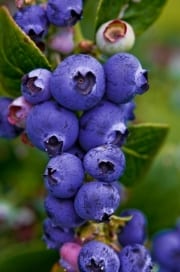Like every popular trend, organic eating can also be taken to an extreme. At some point one must ask, “Am I really getting something out of organic foods or am I just buying into a marketing message?” Let’s take a few minutes to get realistic about organic eating and you will discover that eating organic on a budget isn’t impossible, especially in Colorado. All it takes is a little know-how.
Are organic foods all the same?
Just like there are several different types of bottled water, ranging from filtered tap water to natural spring water, organic foods are also sold in varying degrees of quality. For example, there is something called “USDA Organic,” which is a federally regulated label, but there’s also the organic produce stand that sells pesticide-free fruits and vegetables. If you care as much about the environment as you do about organic produce, you will choose the locally-grown product that doesn’t have to travel far. Remember, just because something is labeled “organic” doesn’t mean it isn’t mass-produced
1. First Buy Local
If it’s your goal to buy organic produce, make the local farmer’s market your first stop. Not only will they often have a better selection of fresh fruits and vegetables, they are more likely to offer great deals. Another way to support your local farmer is to join a community supported agriculture (CSA) program. CSAs allow you to purchase a share of the farmer’s crops for a season for one flat fee paid directly to the famer. You will receive crops as soon as they’re ready for pick-up, making it much more affordable and convenient than shopping in a store. Find out about your local CSAs by visiting LocalHarvest.com.
2. Build your menus around seasonal recipes
As many restaurant owners will tell you, the best way to plan a seasonal menu is to focus on what is cheap, abundant and in-season. For example, if you live in New Jersey tomato country, consider looking up some tomato-based recipes such as stuffed tomatoes, tomato pie, and homemade pasta sauces. Not only will the taste of your favorite dishes be better, they will also be a lot cheaper to make.
3. Start canning, drying and pickling
Are you reluctant to give up the sweet fruits of summer when the weather turns cold? Why not savor them all year long. Smart shoppers buy their organic produce when it’s least expensive, which is typically when it’s in season. Then they stock up on mason jars and start canning them so they will be within reach during the winter months.
4. Create or join an organic food club
We all know that buying in bulk is less expensive, but what if you don’t have enough people in your household to eat everything? Enter the Organic Food Buying Club, which allows small groups to pool resources and buy directly from wholesalers. Your group can be as large or as small as you wish, but most Colorado food buying clubs are made up of friends or neighbors. To start one, simply purchase a membership at a cooperative warehouse or start a relationship with a local distributor. Groups like these can buy everything from produce to paper goods at wholesale prices and it’s a great way to spend time with like-minded friends.
5. Be selective with your organics
Saving money on organic food may mean selecting which foods you will choose from. Not all fruits and vegetables need to be organic in order to be healthy but there are some that should almost always be free from pesticides. Some shoppers buy only the “dirty dozen” from the organic section. These include any fruit or vegetable where the exterior skin is consumed, such as celery, raspberries or apples. To learn more about the “dirty dozen” or the “clean 15,” consult the Environmental Working Group’s Shopper’s Guide to Pesticides.
Even if you do none of the above, there is one easy way to save money on organic produce. You’re your Colorado neighbors and grow fruits and vegetables in your own backyard. Here you will have total control over what you grow, whether it’s a full-scale vegetable plot or an herb garden on your window sill.
Photo courtesy of Michelle Meiklejohn / FreeDigitalPhotos.net




